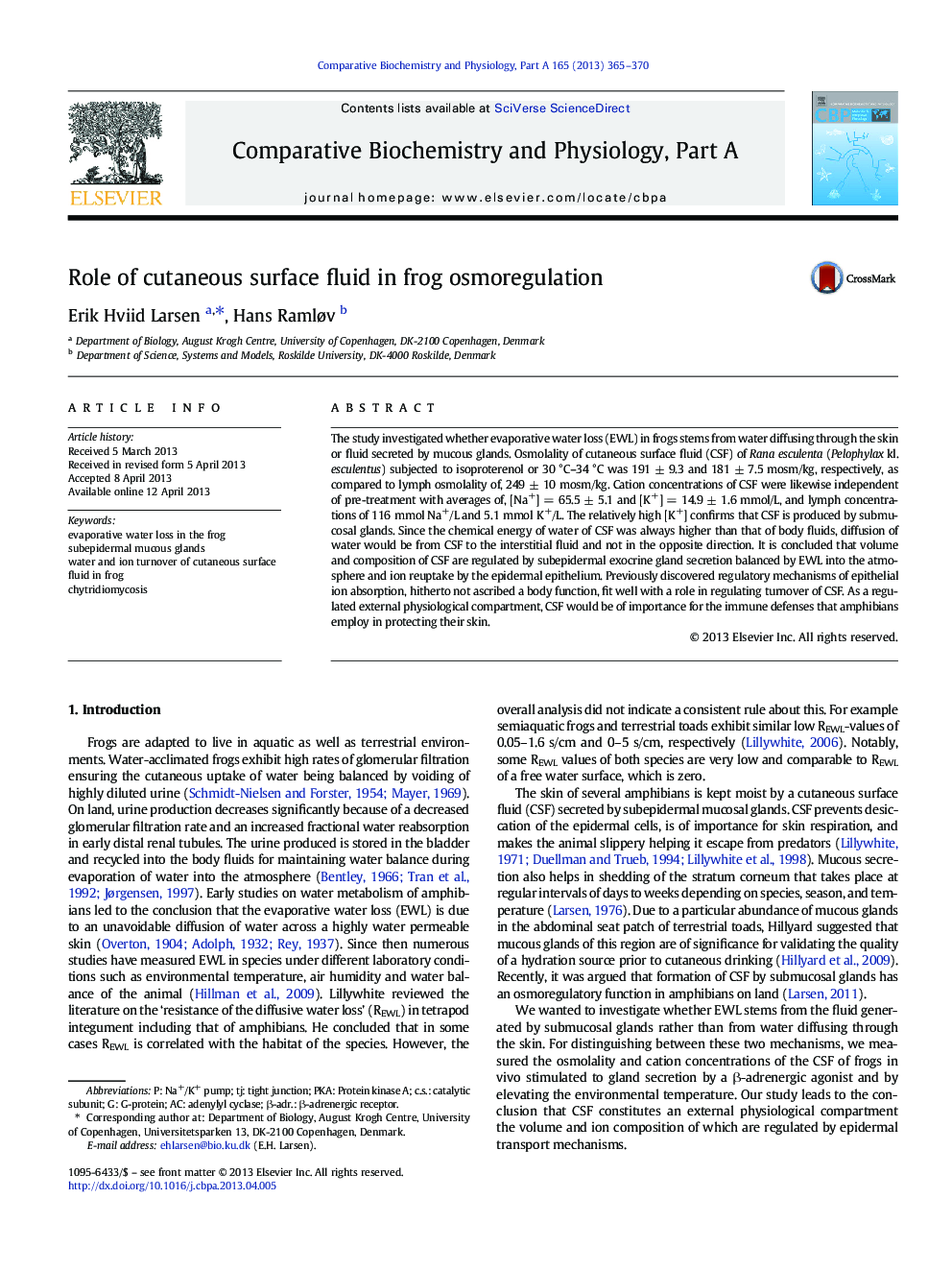| Article ID | Journal | Published Year | Pages | File Type |
|---|---|---|---|---|
| 10818905 | Comparative Biochemistry and Physiology Part A: Molecular & Integrative Physiology | 2013 | 6 Pages |
Abstract
The study investigated whether evaporative water loss (EWL) in frogs stems from water diffusing through the skin or fluid secreted by mucous glands. Osmolality of cutaneous surface fluid (CSF) of Rana esculenta (Pelophylax kl. esculentus) subjected to isoproterenol or 30 °C-34 °C was 191 ± 9.3 and 181 ± 7.5 mosm/kg, respectively, as compared to lymph osmolality of, 249 ± 10 mosm/kg. Cation concentrations of CSF were likewise independent of pre-treatment with averages of, [Na+] = 65.5 ± 5.1 and [K+] = 14.9 ± 1.6 mmol/L, and lymph concentrations of 116 mmol Na+/L and 5.1 mmol K+/L. The relatively high [K+] confirms that CSF is produced by submucosal glands. Since the chemical energy of water of CSF was always higher than that of body fluids, diffusion of water would be from CSF to the interstitial fluid and not in the opposite direction. It is concluded that volume and composition of CSF are regulated by subepidermal exocrine gland secretion balanced by EWL into the atmosphere and ion reuptake by the epidermal epithelium. Previously discovered regulatory mechanisms of epithelial ion absorption, hitherto not ascribed a body function, fit well with a role in regulating turnover of CSF. As a regulated external physiological compartment, CSF would be of importance for the immune defenses that amphibians employ in protecting their skin.
Keywords
Related Topics
Life Sciences
Biochemistry, Genetics and Molecular Biology
Biochemistry
Authors
Erik Hviid Larsen, Hans Ramløv,
